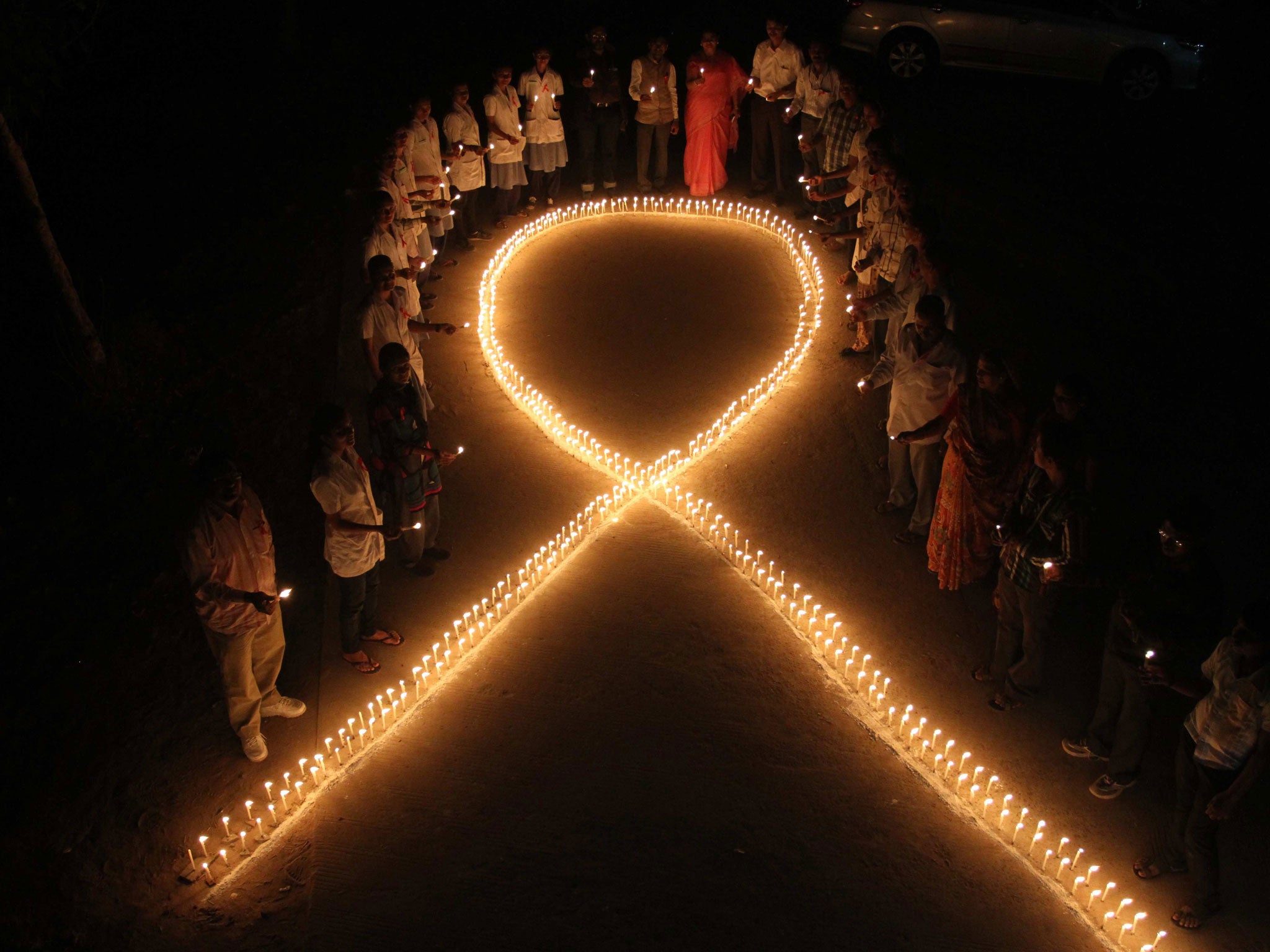World Aids Day 2013: The war on the epidemic is being won, but discrimination against sufferers is still rife
Deaths are down, however battling the stigma is the main obstacle to beating HIV once and for all

The battle against Aids is being won, with deaths down, record numbers of people being treated, and new cases among children down by more than half.
But ongoing discrimination against sufferers is the biggest obstacle to winning the war, according to the head of the United Nations Joint Programme on HIV/Aids (UNAIDS).
Speaking to The Independent on Sunday on the eve of World Aids Day, UNAIDS executive director Michel Sidibé said: "We are winning against this epidemic, we are seeing a decline in new infections, an increase in people treated... we have broken the conspiracy of silence."
For the first time, he said, authorities can see "an end to an epidemic that has wrought such staggering devastation around the world".
He added: "People living with HIV can live long and healthy lives, can now protect their partners from becoming infected, and can keep their children free from HIV."
But Mr Sidibé also warned: "We have not been able to change completely the perception of people against the most-at-risk populations. The stigma, discrimination and criminalisation of those people – sex workers, people who inject drugs, men who have sex with men – all those groups are mainly at risk of continuing to be completely forgotten."
There are more than 70 countries with "homophobic laws" – something which demonstrates "we still have a long way to go".
Discrimination remains a major obstacle in many parts of the world. One in seven people living with HIV has been denied access to healthcare and more than one in 10 has been refused employment. And while the global picture is good, austerity-stricken Europe is at risk of repeated outbreaks of HIV, warned the World Health Organization last night.
In a bid to end the persecution of people with HIV/Aids, UNAIDS is launching a "zero discrimination" campaign, backed by Nobel Peace Prize Winner Daw Aung San Suu Kyi, to mark World Aids Day.
Speaking at today's launch of the campaign to launch a Zero Discrimination Day on 1 March 2014, she said: "We can all make a difference by reaching out and letting people lead a life of dignity, irrespective of who they are."
North America and Caribbean
Aids-related deaths in the Caribbean dropped 50 per cent between 2001 and 2012 (falling from 24,000 to 11,000), but in Jamaica 37 per cent of gay men are HIV positive. Mexico has an HIV rate among gay men of 17 per cent; Guyana 19 per cent. Meanwhile, 17 per cent of Guyanese sex workers are HIV positive, against 1 per cent in Mexico.
South America
Across Latin America there was a 37 per cent drop in Aids deaths between 2001 and 2012 – from 82,000 to 52,000. With its high deprivation and population density, Brazil's HIV rate is among the highest; 10 per cent of gay men, and 5 per cent of sex workers, are HIV positive. In Peru, where less than 0.4 per cent of the population is HIV positive, 12 per cent of gay men are infected.
Africa
In sub-Saharan countries the number of new cases of HIV was 40 per cent less last year than in 2001 – almost a million fewer cases. But with some 1.6 million people infected last year, the continent's struggle with Aids and HIV continues. In Swaziland, one in four adults (26 per cent) is HIV positive. Across the continent there were 1.2 million Aids-related deaths last year. The majority of those infected with HIV were sex workers and gay men. In Ivory Coast half of "men who sleep with men" are HIV positive. By contrast, in developed Middle East and North Africa, numbers acquiring HIV rose by more than 50 per cent, but still remained at just 32,000 people in 2012.
Europe and Central Asia
HIV infections have increased by 13 per cent, or 100,000 people, since 2006. The majority of people diagnosed with HIV were those who inject drugs, and gay men. Across the continent, less than 1 per cent of the population was HIV positive. The Ukraine, Belarus and Spain had the highest HIV rates among needle users, with 21, 17 and 16 per cent respectively. The number of Aids-related deaths in the region has increased from 36,000 in 2001 to 91,000 people last year. New infections among drug users in Greece have risen, despite a general decline elsewhere in Europe, with authorities blaming funding cuts in treatment centres.
East and South-east Asia
Aids deaths were on the rise in East Asia last year, increasing from 18,000 in 2001 to 41,000. A fifth of Thailand's gay men and needle users were HIV positive, compared with 0.6 per cent of the general population. In the Philippines only 1 per cent of gay men had been infected, but 14 per cent of drug users were positive. In Indonesia 9 per cent of sex workers were HIV positive.
Subscribe to Independent Premium to bookmark this article
Want to bookmark your favourite articles and stories to read or reference later? Start your Independent Premium subscription today.

Join our commenting forum
Join thought-provoking conversations, follow other Independent readers and see their replies